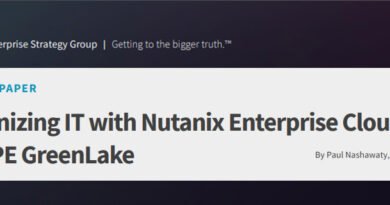Maintaining momentum on digital transformation

Digital transformation across all industries accelerated at an unprecedented pace throughout the coronavirus pandemic. Often within days after shutting down, organizations put in place state-of-the-art technology that enabled legions of employees to work securely and productively from home. Companies sped up the creation and delivery of digital products and services, evolving entirely new operating models.
At Dow, a $39 billion materials science company headquartered in Midland, Mich.—which, among other things, revved up the delivery of digital tools to advance product development—the corporate vice president, chief information officer (CIO), and chief digital officer, Melanie Kalmar, estimates the pandemic helped drive a “200-times increase in innovation-focused digital engagement” since the beginning of 2020. “We were on a digital transformation path, but during the pandemic, we agreed to drive faster and accelerate what we were already working on,” she says.
Those transformation speed gains have created some big questions for CIOs: For starters, how much of that accelerated pace is sustainable over the long term?
In the beginning of the pandemic, digital acceleration was viewed largely as a way to enable remote work and ensure business continuity. Two years later, research indicates that organizations now see digital acceleration as a more permanent fixture in the business landscape. Eighty-six percent of 326 business executives across different functions surveyed by Harvard Business Review Analytic Services in April 2021 said their organization had accelerated its digital transformation during the pandemic. Of those respondents that rapidly transformed, 91% said they plan to maintain the faster speed—or possibly increase it—even after the pandemic ends.
One of the biggest challenges facing Kalmar and other CIOs is ensuring they can capitalize on their organizations’ accelerated transformation progress and continue to create game-changing digital innovation that translates to sustainable business value, without burning out talent. Equally important is building greater agility and resilience throughout the enterprise as a way to ensure readiness for unknown disruptions in the future. One of CIOs’ greatest lessons from the past two years is that an ability to pivot quickly is crucial in times of extraordinary uncertainty. Achieving that capability has less to do with technology than with reshuffling enterprise priorities, adopting new work strategies, and leveraging leadership skills that clearly focus on people and culture, all of which are top priorities for CIOs going forward.
The organizations best positioned to maintain their transformation momentum are those focused on “a truly different way of working” going forward, says Melissa Swift, U.S. transformation leader at Mercer, a New York-based management consulting firm. “Right now, one of the biggest obstacles to [ongoing digital progress] is all of the rhetoric about the return to office,” Swift says. “The more cutting edge organizations are working toward pushing the envelope beyond hybrid working arrangements to making work itself more sustainable.”
Sustainability for the long term includes factors like automating work that is physically dangerous, boring, or repetitive and empowering frontline workers to make decisions based on new digitized information systems. Automation also removes monotony, letting workers focus on more meaningful or innovative tasks. Re-creating what was normal before the pandemic should not be the organizational goal. If it is, the organization could fall behind competitors. Instead, CIOs should focus on enabling even greater flexibility, resilience, and momentum by focusing on four key areas: reimagining work to fight change fatigue; building digital acumen across the enterprise; creating more agile operating models with alternate paths to operational resilience; and deepening human connections between colleagues, teams, and customers.



